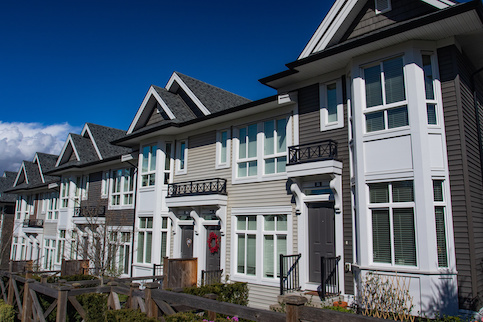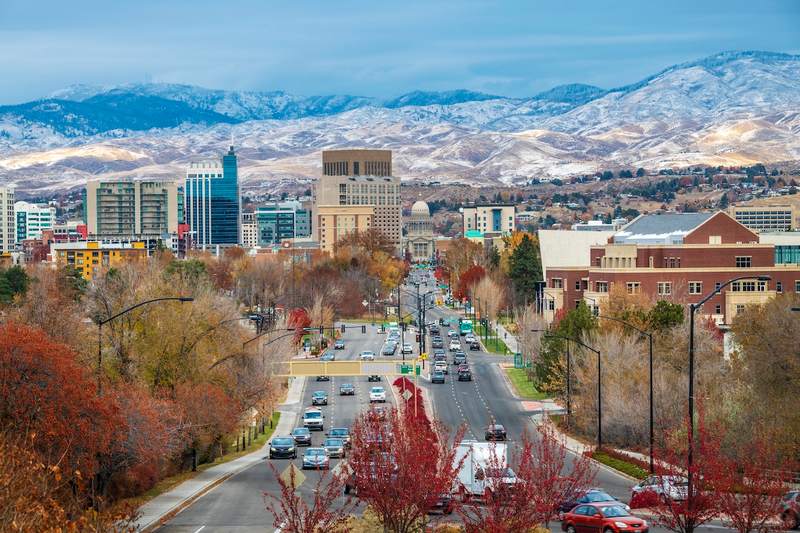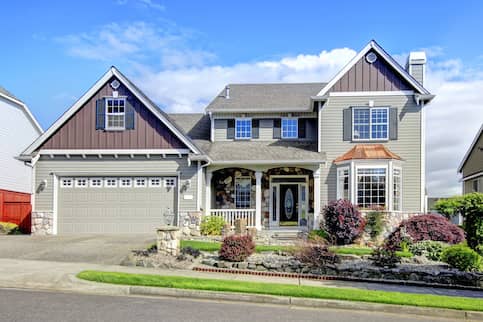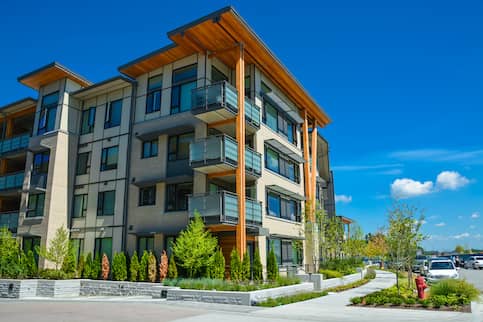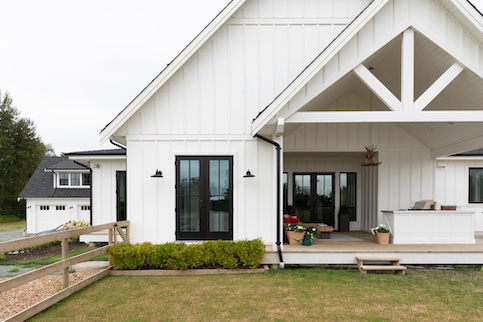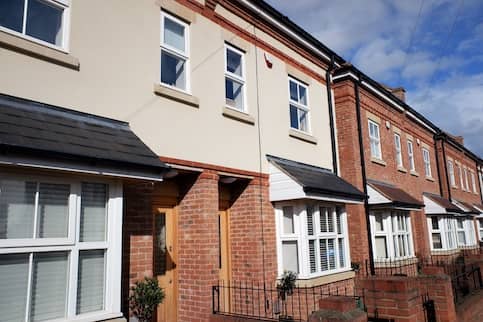Thinking of buying an apartment building as an investment property? Or maybe you’re ready to make a smaller investment by purchasing a single-family home and renting it out? In either case, you’ll want to know how much you can expect to earn from your investment each year. You’ll also want an idea of how risky an investment might be.
This is where a property’s cap rate, also known as its capitalization rate, comes in. Investors calculate cap rates to gauge the risk and income potential of residential and commercial real estate properties.
But how do you calculate a property’s cap rate, and what does the resulting number tell you? Here’s a look at how cap rates work and how they can help you make a wise real estate investment.
Key Takeaways:
- The cap rate is a figure that estimates the profitability and risk of a potential investment property.
- The cap rate factors in the cost of owning and maintaining a building and is expressed as a percentage rate.
- A higher cap rate means higher potential profits. However, properties with a higher cap rate also can be riskier investments. Likewise, a lower cap rate means lower potential returns and less risk.
What Is Cap Rate, Or Capitalization Rate?
Capitalization rate – or cap rate – is a metric that considers the income from a property and the cost of owning it to estimate the return on a rental property.
The higher a property’s cap rate, the greater the profit potential. The lower the cap rate, the longer it might take to see a return on your investment. Higher cap rates can be riskier because the property might need more work or it’s in a less desirable area. While you might earn more from an asset with a high cap rate, the risk of losing money also is high. Similarly, a building with a lower cap rate is likely to be less profitable, but it’s also less risky.
Whether you want a property with a high or low cap rate depends on your tolerance for risk. If you’re aiming for the highest possible profits, seek out a property with a higher cap rate. If you want a safer investment, target a lower cap rate.
Keep in mind that investors should never rely solely on cap rates when deciding which properties to purchase. Instead, they should consider the cap rate alongside other factors, including the age of a property, its vacancy rate and the neighborhood’s desirability.
What Is A Good Cap Rate?
How do you know if a cap rate is good or bad? It largely depends on your goals as an investor. If you’re looking to make a lot of money quickly, you want a property with a higher cap rate. If you want a safer investment, a property with a lower cap rate would be a better choice.
A property’s cap rate usually is considered good if it’s between 4% and 12%. Again, you’ll need to consider other factors to determine whether a cap rate works for you, including your investment goals, the type of real estate you want to buy, the property’s location and the performance of the local real estate market.
What’s Your Goal?
Buy A Home
Discover mortgage options that fit your unique financial needs.

Refinance
Refinance your mortgage to have more money for what matters.
Tap Into Equity
Use your home’s equity and unlock cash to achieve your goals.
How To Calculate Cap Rate: An Example
Cap rate calculation is relatively simple. Here is the formula:
Capitalization rate = (Annual net operating income / Current market value of the property) x 100
1. Calculate The Annual Net Operating Income Of The Property
Determining net operating income is your first step in calculating a property’s cap rate. You do this by taking the total revenue generated and subtracting the cost of owning and maintaining the property.
Let’s break down each of these components:
- Total annual revenue generated: In most cases, investment properties primarily generate income from the rent paid by the tenants.
- The property’s total annual expenses: Owning a building is expensive. Expenses include maintenance, property taxes, insurance, utilities, repairs and management fees. You should also factor in 7% to 10% to account for potential vacancies that can reduce the rental income.
- The total after subtracting expenses from revenue: Subtract the expenses from revenue to calculate the net operating income.
For example, say you’re considering investing in a multifamily property with six rental units. You plan on charging $1,200 in rent for each unit. That comes to a revenue of $7,200 a month or $86,400 a year. The expenses involved in owning and maintaining this building come to $4,000 a month or $48,000 a year. If you subtract $48,000 in expenses from $86,400 in revenue, you get a net operating income of $38,400. This is the amount of money a year an investor could expect to earn from owning the property.
2. Divide The NOI By The Current Market Value Of The Property
Next, you’ll divide your property’s net operating income by its current market value. To determine the market value of an investment property, you can use a home value estimator or comparative market analysis. Some investors favor calculating the cap rate using the purchase price instead of the market value.
Say the six-unit multifamily property you want to buy is worth $500,000. When you divide its net operating income of $38,400 by $500,000, you get 0.0768.
3. Convert Results Into A Percentage
Finally, to convert your calculation into a percentage, multiply the number by 100 or move the decimal point to the right by two spaces. In this case, 0.0768 would come out to a cap rate of 7.68%.
Take The First Step To Buying A Home
Find a lender that will work with your unique financial situation.
What Affects Cap Rate?
A property’s expected annual revenue isn’t the only factor affecting its cap rate. Other attributes of the property and its neighborhood also play a role.
Some of these factors include:
- Property location. Properties in desirable neighborhoods typically have higher earnings potential because their owners can charge more rent. However, these properties also have higher sales prices that may lower the cap rate. Locations that are less desirable or more inconvenient may have a lower sale price but a higher cap rate.
- Market conditions. Cap rates can be sensitive to specific market conditions. For example, a strong market that boosts rents and a property’s income can raise its cap rate. However, the cap rate may decline if the same strong market increases the property’s value.
- Condition of the property. If a multifamily property is well maintained, the owner can charge higher rents, boosting the net operating income and increasing the cap rate. However, these buildings also tend to cost more, which can pull a property’s cap rate down. Properties that are aging and need renovations can often be bought at a lower price, which can push a cap rate up. However, owners usually charge lower rents for these properties, which can then decrease the cap rate.
- Capital liquidity. The amount of money you put into the property will directly affect the cap rate. Higher upfront and operating expenses will lower the cap rate but also present an opportunity to raise the rent, increasing the property’s income and boosting the cap rate.
View Your Refinancing Options
Find a refinance lender that will work with your unique financial situation.
FAQ
Have questions about cap rates and what they mean to real estate investors? Here are some answers.
– Return on investment. This predicts the profit margin of the investment property as a percentage of the cost.
– Internal rate of return. This measures the projected profit the property could earn during the time you own it. It’s expressed as a percentage rate you can generate based on your initial investment into the property.
– Gross rent multiplier. This is the ratio of the property’s market value to its gross annual income.
The Bottom Line
Investing in real estate can be a smart way to generate extra income – but it also comes with risks. The cap rate formula can help you determine how much risk you’ll face when investing in a multifamily building or other property. But remember that a building’s cap rate is only one measure of its income potential. It’s a starting point, but you’ll need to consider other factors before investing.
More From Quicken Loans:
Rory Arnold contributed to the reporting of this article.

Dan Rafter
Dan Rafter has been writing about personal finance for more than 15 years. He's written for publications such as The Washington Post, Chicago Tribune and Wise Bread.
